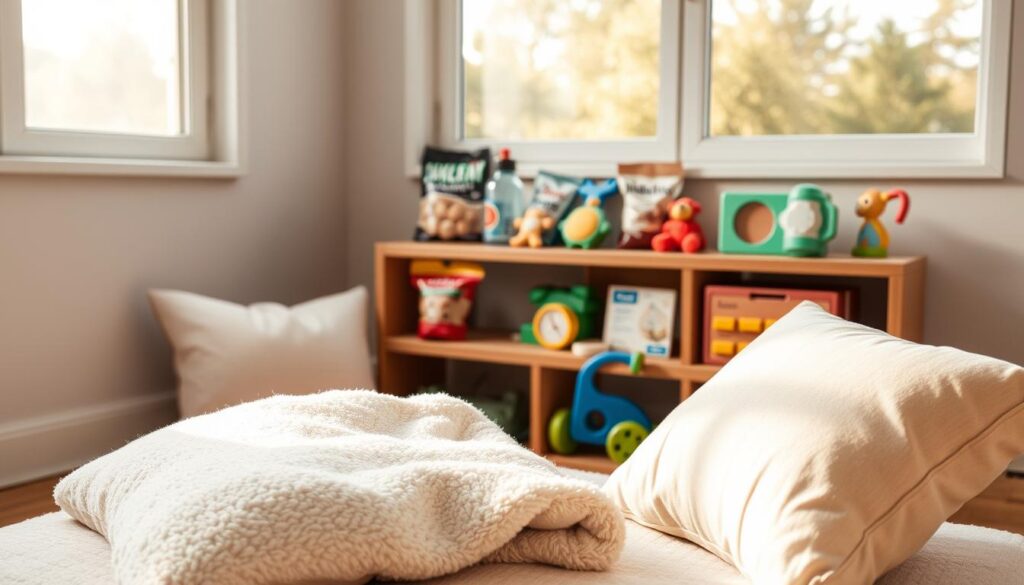Hey there! I’m Zara, and I’m 12 years old. I started Assetsforkids because I realized kids need to learn about money early. Adults sometimes make kids financial literacy too hard.
Today, I want to talk about something very important. Knowing what we need versus what we want is like having a superpower with money. Trust me, once you get this, everything changes!
I’ve learned that teaching children money management is more than saving money. It’s about making smart choices for our future. Whether you’re 9 or 14, these choices matter every day.
I want to share what I’ve learned about needs vs wants for kids. It can really help you feel more confident about money choices. Just like it helped me!
Why I Started Thinking About Needs vs Wants
I never thought about needs and wants until last month. Everyone in my class got expensive sneakers. They were all over social media.
All my friends had them, and I felt left out. I told my mom I “needed” them. But she asked, “Zara, do you need them to walk, or do you want them to fit in?”

That question hit me hard. I realized I already had good shoes. The expensive ones were just for fitting in.
It’s a common thing! We say we need things we really want. Like the latest video game or cute earrings. But most of the time, they’re just wants, not needs. Learning about money for kids became clearer once I saw this.
| What I Said I “Needed” | What I Actually Had | Real Category |
|---|---|---|
| Expensive sneakers | Comfortable shoes that worked fine | Want |
| Latest video game | Several games I barely played | Want |
| Designer backpack | Sturdy backpack in good condition | Want |
This was a big moment for me. Seeing how children spending habits are influenced was eye-opening. I decided to help other kids understand this too. It changes how they make kids money decisions.
What Are Needs and Why They Matter So Much
Understanding basic needs for children is simple. It’s about what keeps us alive and healthy. I’ll make it easy and real.
Needs are things we can’t live without. Imagine being on an island. You’d need food, water, shelter, and clothes. These are your survival needs.
In everyday life, we need more. A safe home, healthy food, and clean water. We also need clothes and basic healthcare when sick.

Needs aren’t about happiness or fitting in. They’re about staying healthy and safe. You need shoes, but not expensive ones.
Understanding needs is simple. Most essential items kids need aren’t expensive. Wants are what cost a lot and cause trouble. Learning this helps with smart money habits early.
| Need Category | Examples | Why It’s Essential |
|---|---|---|
| Food & Water | Healthy meals, clean drinking water | Body energy and growth |
| Shelter & Safety | Safe home, protection from weather | Physical security and health |
| Clothing | Weather-appropriate clothes, shoes | Body protection and warmth |
| Healthcare | Medical care, basic hygiene | Preventing and treating illness |
Understanding Wants and Why They Feel Super Important
Wants are hard to deal with when it comes to money. They are things that make us happy but aren’t needed to live. Think about cool phone cases, trendy sneakers, or the latest video game.
It’s tricky because children’s desires seem very important. This is because of sneaky reasons that companies and friends don’t always see.
Advertising and social media play a big role. Companies spend a lot to make us think we need their products. They make material wants kids feel like must-haves.
Peer pressure also plays a part. When everyone has something, we want it too. Nobody likes feeling left out, and I’ve definitely felt that way!
FOMO, or fear of missing out, is another factor. It makes us think we need things right away. This makes us feel like we can’t miss out.
But, most wants don’t make us happy for long. That excitement fades fast. Then, we want the next thing.
Learning about this has helped me feel more in control. Wanting things is normal. But we don’t have to get everything we want. That’s where the real power is.
The Difference Between Needs and Wants in Modern Kids Life
Today’s world makes it hard to tell needs from wants for kids like me. Our parents didn’t have to choose between the latest gadgets when they were young. They didn’t have to decide if a new gaming console was a must-have for friends.
But we do, and it’s confusing. Modern children spending choices are much harder than before.
Let’s look at phones as an example. Do we really need them? It depends on the situation.
If parents need to reach you for safety, or if you walk home alone, a basic phone is a need. But do you need the newest iPhone with all the extras? That’s probably a want.
Internet access is another example. It’s a digital age need for school and staying in touch with family. But do we need the fastest internet for gaming or every streaming service? Those are wants.
Social needs are tricky too. Humans need friends and connection. But do we need expensive clothes to fit in? Do we need to go to every paid event our friends attend?
I’ve had to be really honest with myself. I need friends and connection, but I don’t need to spend a lot to keep friendships. Real friends like me for who I am, not for what I have.
Another challenge is technology wants vs needs that seem very important. Like, do I need that premium game skin, or do I just want it because it looks cool? Do I need every app my friends use?
Companies and social media try to make us think their products are needs when they’re really wants. Our basic human needs are still the same – food, shelter, safety, clothes, and connection.
Everything else is probably a want, even if it feels super important right now.
My Simple Tricks to Figure Out the Difference
Knowing what you need versus want can be tough. Emotions can make it hard to decide. I’ve found some tricks to help me make better money choices children face every day.
My first trick is the “Wait Test.” If I want something, I wait a week before buying it. Often, the want goes away after a few days. If I still want it after a week, it might be worth it.
The second trick is the “Replace Test.” I think about what I’d have to give up for what I want. If getting something means skipping a need, it’s not worth it.
Imagine skipping lunch money or school supplies for something you want. This helps me see the real cost of my choices.
I also use the “Future Me Test.” I think about if I’ll still care about it in a year. This helps me decide if trendy stuff is really important.
When Everyone Has the Latest Thing Except Me
Feeling left out is hard. When friends have the newest things, it’s tough. The pressure to fit in can make wants feel like needs.
I ask myself if I really like something or just want it because others have it. Would I still want it if no one else had it?
Sometimes, I realize I don’t really like something. I just don’t want to be different. That’s when I know it’s a want, not a need.
What I Do When I Feel Left Out
Feeling left out is tough. I remind myself of my goals and what I’m saving for. Maybe I can’t get those expensive shoes, but I’m working toward something better.
Talking to my parents or siblings helps too. They remind me of times they wanted something everyone had, but later realized it wasn’t important. Hearing their stories helps me feel less alone.
Finding friends who think like me also helps. Not everyone needs the latest things. Hanging out with kids who make thoughtful money choices children should make makes me feel less pressured.
Lastly, I focus on what I do have. I might not have the newest gaming system, but I have books, art supplies, and family experiences. These things are more important than trends.
How This Helps Me Save Money for Cool Future Stuff
Learning about needs versus wants changed my money habits. I stopped buying things I didn’t really need. This left me with way more cash for things I really wanted.
Before, my money would just disappear. I’d buy candy bars, cheap toys, and forget about them soon. Now, I think about every purchase. It’s a choice between now or my future financial goals.
I’m saving for some cool things! I want to start a small business and get a good camera for videos. These goals keep me focused when I see things I don’t need.
Kids saving money feels really good. Watching my savings grow is satisfying. It’s like a game where the prize is something I really want.
This approach teaches delayed gratification children to make smart choices. When I spend money, it feels right because I thought about it. No more guilt or worry about money.
My friends now ask me for money advice. They see I always have cash for things I really want. It’s not because I get more allowance. It’s because I choose where my money goes.
Making Smart Money Choices Every Day
Learning about needs versus wants has changed how I think about money. These skills aren’t just about spending less. They make me feel more confident about every choice.
When I see something cool at the store, I pause. I ask myself if it’s a need or a want. This habit has saved me from buying lots of stuff I’d forget about soon.
This thinking helps with more than just money. I make better choices about how I spend my time too. I pick activities that really matter to me, not just what seems fun right now.
These lessons have taught me that having control over my decisions feels better than buying random stuff. When my friends stress about money, I feel calm. I know my system works.
Start small with your next purchase decision. Ask yourself if it’s really a need or just a want. Practice makes this easier every time. You’ll be amazed at how quickly you start feeling more confident about money choices.
Remember, every smart choice you make today builds skills for life. You’re already ahead of most people just by thinking about this stuff.